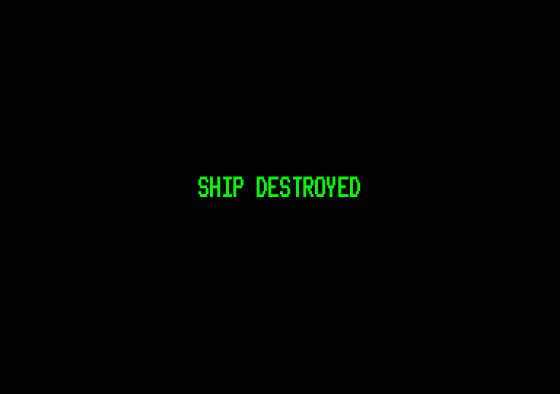
Amstrad Computer User
 1st March 1986
1st March 1986
Categories: Review: Software
Publisher: Mikro-Gen
Machine: Amstrad CPC464
Published in Amstrad Computer User #16
Battle Of The Planets
If you are in the habit of getting up on Saturday mornings you will have seen the Space-age cartoon - Battle Of The Planets. Mikro-Gen have used this programme as the theme for their latest program. If you are expecting a Wally type sprite game then think again - this is a new departure for Mikro Gen, and an excellent one at that.
The first thing that strikes you about this game is the fact that it is so smooth and fast. It is better than Starion and has hidden line removal, which makes the objects appear to be solid and not just made of wire. From the fleeting glance I have had of Elite, I would say it is faster than that. After a loading screen you are presented with the front menu showing all the controls, and a variety of your opponents rotating in a window at the top right of the screen.
The plot portrays you as the latest member to be recruited into G-FORCE, The Galaxy Savers. Unfortunately they are busy elsewhere and so you have to solve this particular problem, cooked up by their Arch enemy, Zoltar, alone. You are in a mini Solar system with five planets and Zoltar has sent out a part of his fleet to try and destroy the inhabitants. The ships will fly from planet to planet, and you must intercept them before they beam down to the surface. If you miss them in space, you must follow them down to the planet surface and then shoot it out Battlezone-style, avoiding the futuristic looking tanks and the other craft.

You can either shoot them with your laser, being careful not to let it overheat, or dispatch them with a rocket or two. This is a quicker alternative, but you can only carry a limited number at a time.
While you are on the planet you should replenish your fuel in the fuelship, and have your rockets and shields seen to in the repair ship. The five charts that can be called up into the bottom part of your status window tell you how your three shields are doing, what your speed is, how much fuel you have left and whether the engines are overheating, how many rockets you have left. and how many enemy landing craft are on the nearest planet as well as letting you know how much of the population is left alive.
You have a separate chart telling you what your laser temperature is and how many laser cells you have left. If you allow your laser to overheat by shooting too fast it will not work until it has cooled down. As you use it you will gradually destroy the bank of laser cells that provide the power, rendering you weaponless until you visit a planet for repairs.

Near each planet there is a hyperspace gate which will lead to whichever of the five planets you select. It is a never ending battle as you shoot all the ships around one planet then chase off to one of the other planets before the remaining forces can do too much damage there. If Zoltars' ships succeed in killing off all the inhabitants on a planet then you have lost the battle.
That is if you don't get blown out of' the stratosphere first. When playing, the bottom third of the screen is divided into two windows. The left hand one shows whichever of the five status charts you have currently selected, and the right shows you the state of the fuel, lasers, shields and what condition of the planet. in an easy to understand, at a glance format, i.e, if your shield light is flashing then get to a planet fast before something hits you.
On the main display you only have a forward view, but there are hovering icons that flit around the borders of the main display to indicate what is out of view. For instance if there is an enemy icon flitting up and down the left hand border of the display then there is an enemy to your left. Turn left and when the enemy is in sight the icon disappears. This very soon becomes second nature. Simply point your ship in the direction of the icon you want, whether it is enemy, planet or hyper-space gate.
This game was selected for the National Computer Games Championship which took place on December 12, 1985 and if you think your score is especially good, then send both score and the code that appears with it, to Mikro-Gen, and you may be selected for the finals of next year's Championship.
Altogether, if you want a good enjoyable blast with some amazingly smooth and fast graphics, and enough plot to keep you occupied but not snowed under with complexity, then I recommend you buy this game.
Other Reviews Of Battle Of The Planets For The Amstrad CPC464
Battle Of The Planets (Mikro-Gen)
A review by Bob Wade (Amstrad Action)
Battle Of The Planets (Mikro-Gen)
A review










